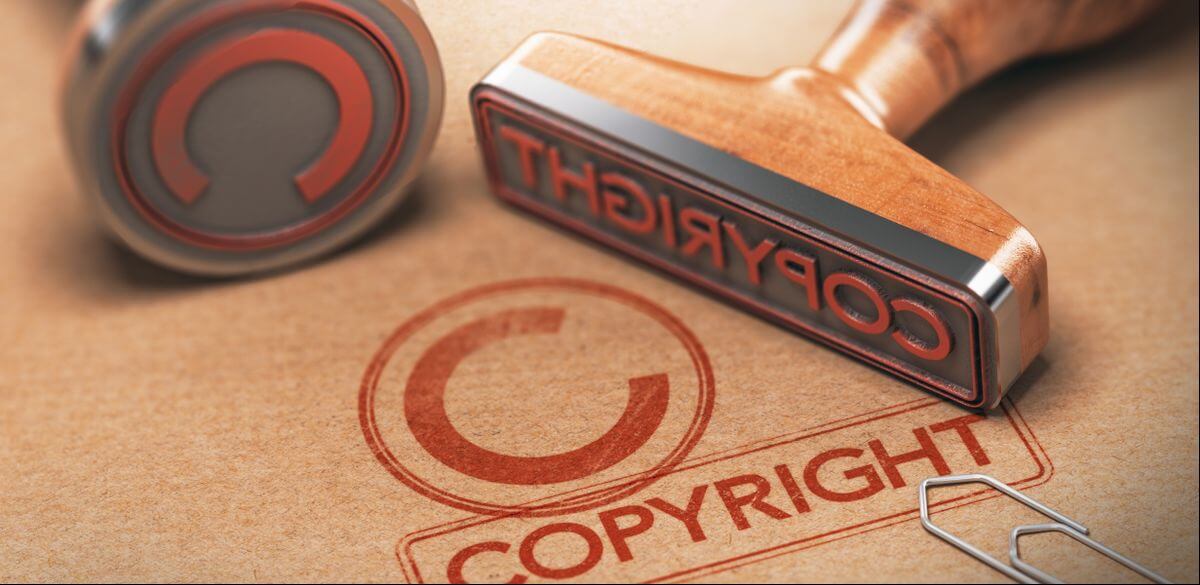
How to Copyright a Logo?
by Abdullah Ali on Oct 13, 2023In today's digital age, logos are a critical component of a brand's identity. They serve as visual symbols that represent a company's values, products, and services. Protecting your logo through copyright is essential to safeguard your brand from potential misuse or infringement. In this comprehensive guide, we will walk you through the steps on how to copyright a logo, ensuring your intellectual property rights are upheld.
Why Copyright Your Logo?
Before delving into the process, it's vital to understand why you should copyright your logo. Copyrighting your logo provides you with exclusive rights to its use, preventing others from reproducing, distributing, or using it without your permission. It also gives you legal recourse in case of infringement, allowing you to protect your brand's integrity.
Step 1: Create the Logo
Your journey to copyrighting a logo begins with its creation.
A. Design an Original Logo
When designing your logo, strive for originality. An original logo is one that you create from scratch, without copying or imitating existing designs. This uniqueness is a key criterion for copyright eligibility.
B. Avoid Copyrighted Elements
Ensure that your logo doesn't include elements that are already copyrighted by someone else. Using copyrighted material in your logo could lead to legal complications.
Step 2: Verify Copyright Eligibility
Not all logos are eligible for copyright protection. To qualify, your logo must meet the following criteria:
A. Originality
Your logo must be an original creation, not a reproduction of an existing design. It should be a product of your creative effort, reflecting your brand's unique identity.
B. Fixed in a Tangible Medium
The logo should be in a tangible form, such as a digital file, printed material, or a design on a physical product. This requirement ensures that the logo can be protected under copyright law.
Step 3: Conduct a Copyright Search
To ensure that your logo does not infringe on someone else's copyright, conduct a thorough copyright search. This involves checking databases and trademarks to make sure your design is unique.
A. Professional Assistance
Consider seeking the help of a legal professional or intellectual property expert to conduct a comprehensive copyright search. They can ensure that your logo is not similar to any existing trademarks.
Step 4: Register Your Logo
Registering your logo with the U.S. Copyright Office or the equivalent office in your country is a crucial step. This provides your logo with legal protection and the ability to sue for damages in case of infringement.
A. Application Process
- Fill out the copyright application form thoroughly and accurately.
- Pay the required fees, which may vary depending on your location and the specific procedures in place.
- Submit your logo as part of the application, ensuring it meets the office's specifications for file format and quality.
B. Consult a Copyright Attorney
It's advisable to consult with a copyright attorney during the registration process. They can guide you through the paperwork, ensuring it is correctly completed, and answer any legal questions that may arise.
Step 5: Retain Documentation
It's essential to keep records of the logo's creation, copyright application, and any correspondence related to its protection. These records can be valuable in case you need to enforce your copyright.
A. Record-Keeping
Maintain a detailed file that includes the logo's original design files, copyright application documents, and any communication related to the copyright process. These records will serve as evidence in case of disputes.
Step 6: Display the Copyright Notice
Once your logo is copyrighted, display the copyright notice prominently. This serves as a warning to potential infringers and strengthens your legal standing.
A. Copyright Notice Format
The copyright notice typically includes the copyright symbol (©), the year of first publication, and the copyright owner's name. For example: © 2023 Your Company Name.
Step 7: Enforce Your Copyright
If you discover unauthorized use of your logo, it's crucial to take legal action to protect your rights.
A. Consult a Legal Professional
In case of infringement, consult with a legal professional to determine the appropriate legal action. This may include sending cease-and-desist letters, negotiating settlements, or pursuing litigation.
Conclusion
In a world where visual branding is of utmost importance, copyrighting your logo is a proactive step to secure your brand identity. By following these steps, you can protect your logo and the integrity of your brand from unauthorized use and misuse.
FAQs (Frequently Asked Questions)
1. How long does it take to copyright a logo?
The time it takes to copyright a logo can vary, but it typically takes several months. This includes the processing time at the copyright office, which may differ from one location to another.
2. Can I copyright a logo internationally?
Yes, you can protect your logo internationally through various copyright treaties and conventions, but the process may vary from country to country. Consulting with an intellectual property attorney can help you navigate the international copyright landscape.
3. What are the costs associated with logo copyright registration?
The costs for copyright registration can vary depending on the country and specific procedures. Application fees are common, but the exact amount may differ. Check with your local copyright office for specific pricing and requirements.
4. What should I do if someone infringes on my logo's copyright?
If someone infringes on your logo's copyright, consult with an attorney to determine the appropriate legal action to take. Possible actions include sending cease-and-desist letters, negotiation for settlements, or pursuing litigation in a court of law.
5. Can I copyright a logo that I didn't create myself?
Yes, you can copyright a logo even if you didn't create it personally. However, you must have legal rights to the logo, such as through ownership or a licensing agreement. Ensure that you have the necessary legal documentation to support your copyright claim.

